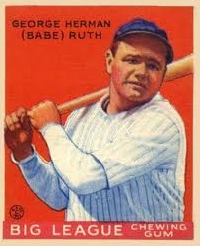
You know how to value your sports memorabilia if you are an informed collector
When you were a kid, you collected things like baseball cards and autographed footballs because you loved the sports and you loved the players who played them. As you got older, you began to think that perhaps you could actually make some money off the items you collected, but you just aren’t sure how to go about doing it.
The following tips on how to value your sports memorabilia will make you a smarter collector.
Consult with the experts
So how do you know what one card or signed football or jersey or poster is worth compared to another? Luckily for you, the business side has led quite a few companies to specialize in valuing collectible items. The real issue becomes knowing who to go to when you are looking for a good valuation.
Sometimes the answer is as simple as going to a company that has been around quite a long time. As a general rule, these companies have lasted as long as they have because they have treated clients fairly and thereby generate more business.
Look for a company that has been around for quite some time and has extensive knowledge when it comes to valuing a wide variety of items. Top ranked companies put out magazines — known as price guides — and have a solid history of following memorabilia prices, making it that much easier to do the investigating on your own. You can buy a price guide, or even get a subscription and look up the price of any card, or other memorabilia and know what you can expect to earn if you sell it.
~
There is a caveat that comes along with using a price guide and valuing the items yourself. While a company will give you the current market value of a card, or other collectibles, that may not actually be exactly what you can get for it. Part of knowing how to value your sports memorabilia is knowing the value only goes as far as the demand. If a sports card is valued at $50, that doesn’t mean you can walk into a trade shop and walk out with that much money.
If the shop you’ve gone to already has enough of those items, they may offer you a lower price or they may not want to buy it all. The fact of the matter is that price guides are better at telling you the maximum value of a collection but it isn’t able to give you the minimum.
Know how to organize your collection
The sports memorabilia market has become big business over the last few years, as collectors surface with some really expensive items such as the famed Honus Wagner card.
While the owner of that particular card hit the lottery jackpot, not every piece of someone’s collection is going to bring home a great deal of money. That doesn’t mean the pieces are worth nothing, it just means you might need to group a couple of things together in order to make some real cash.
Go to a Broker
If you don’t want to value the items yourself, or you don’t know what to do once the items have valued, you can always go to a broker. These people can tell you the maximum you are going to earn while also giving you a good idea of what the market is actually showing interest in at the moment.
If you use a broker and a price guide in tandem, you will know if the broker is low-balling you entirely too much for one item or another. If the broker is telling you a $300 item can only be sold for $30, they are likely attempting to trick you.
Use Multiple Sources
The best advice for knowing how to value your sports memorabilia is to go to more than one source. Don’t take the first source at face value, seek a second opinion. If those opinions are varying wildly, seek a third.
